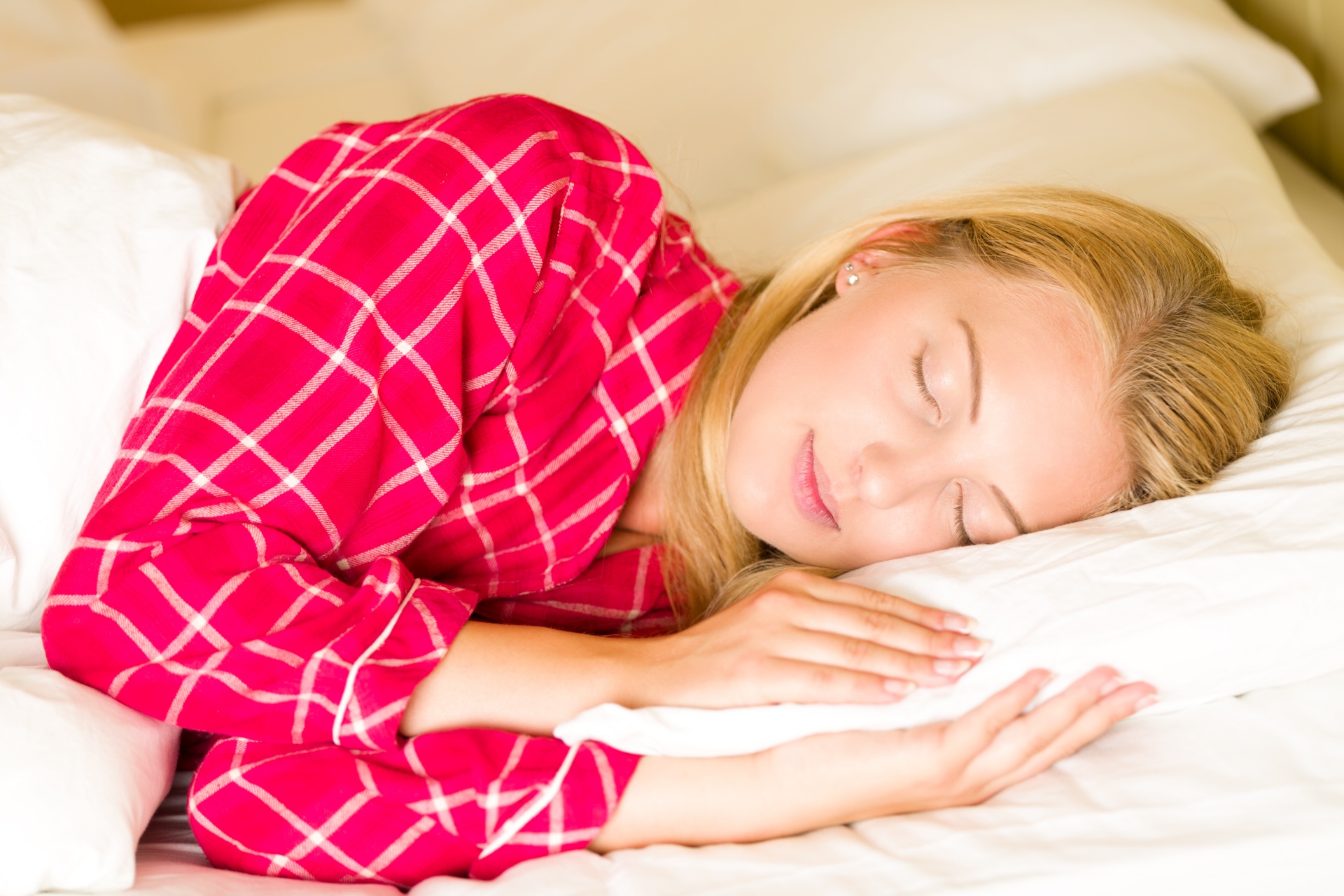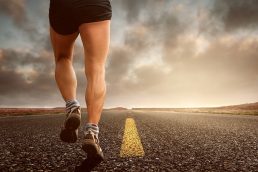
How to nap and not feel exhausted?
It is not surprising that getting enough sleep is important for overall health and well-being but sometimes it might be particularly hard when working a night job or having a lot of stress. In these situations, napping can be an effective way to restore energy levels and improve cognitive performance during the day. However, it’s not uncommon that people may feel groggy or disorientated after a nap. Consequently, that state also known as “sleep inertia” can pose a lot of problems during the workday. Here, we will try to advise you on how to make your nap more effective and less tiring or spacing out.
Sleep phases in a nutshell
Sleep is made up of several stages and phases that are repeated in a cyclical pattern throughout the night. Rapid eye movement (REM) and non-REM are the two main types of sleep, which are further subdivided into four distinct stages. Here’s a rundown of your typical night’s rest:
Non-REM phase:
Stage N1: This is the stage in which you go from being awake to falling asleep. During that time, you may feel drowsy and lose awareness of your surroundings. Brain activity slows, and you may experience jerks or muscle contractions.
Stage N2: You are in a light sleep at this point, but your brain activity has slowed even more. The temperature of your body drops, and your heart rate as well as breathing become more regular.
Stage N3: This is a deep sleep stage characterized by slow brain waves called delta waves. During this stage, it is difficult to wake up, and if you do, you may feel groggy or disoriented.
Stage N4: The deepest stage of sleep, characterized by delta waves. The body engages in restorative processes such as muscle and tissue repair and the release of growth hormones.
REM phase: This is the part during which you dream the most, and your eyes move rapidly back and forth. In this phase, brain activity increases to a level comparable to when you are awake. Your muscles become temporarily paralyzed, making it impossible for you to act out your dreams.
These stages of sleep occur in cycles during the night, with REM sleep being more frequent in the later patterns. Understanding sleep stages is critical for ensuring that you get enough of each stage for optimal health and well-being.
Here’s the culprit
“Sleep inertia” refers to a transitional state between sleep and waking up characterized by impaired physical and mental performance, decreased alertness, and a desire to return to sleep. The intensity and duration of sleep inertia vary depending on the conditioning factors, but its effects can last from a few minutes to several hours. In some disease states, there is a transitional period similar to that, which is sometimes referred to as “sleep intoxication.”
Sleep inertia is absolutely normal and even necessary, but it has potentially dangerous consequences. This is a serious issue that should be considered especially in a case of emergency. The effects of sleep deprivation and chronobiological differences are undoubtedly among the most widespread limitations of human capacity in situations that require continuous periods of increased productivity. These work scenarios are becoming more and more common, often involving highly skilled workers such as healthcare or military personnel who are suddenly awakened at night to make important decisions.
The exact function of inertia during sleep remains largely unknown. From an evolutionary perspective, one might suppose that the ability to wake up quickly from sleep would be beneficial, for example when waking up in response to a potential threat. A more gradual awakening, however, may also be protective, given the complexity of neural circuitry in transitioning from one state to another. Sleep inertia may, therefore, be an adaptive mechanism that promotes sleep upon awakening so that sleep is maintained when we don’t want to wake up. Therefore, we are able to fall asleep at night immediately after waking up. You’ve got to admit that’s pretty convenient.
In light of new research, there are theories claiming that gradual awakening from REM sleep may be a “reset” function to minimize hypnopompic intrusions into the waking state (they include hallucinations that may seem real and are often terrifying just like nightmares). On the other hand, when we are falling asleep, we may experience something similar, and it’s known as “hypnagogic intrusions”.
Studies comparing sleep inertia with pre-sleep mental performance values have typically shown a return to these levels within 30 minutes of waking, and sometimes as early as 15 minutes after waking.
So, how to nap?
Napping is the recommended remedy for drowsiness in articles, trade journals and government occupational safety publications. It is truly a lifesaver for shift workers. However, the guidelines for implementing this countermeasure are often vague. In general, we should consider potentially lower performance after waking up, but details are rarely given regarding the severity or duration of sleep inertia after various napping methods. The most common opinion is that a nap should last about 30 minutes, but is this completely true?
Data suggests that sleep inertia is most intense with a 50-minute nap and surprisingly less intense with a 20-minute nap. The contradiction in research findings regarding the effect of sleep duration can be well explained by sleep stages that occur prior to waking. It has been shown that during a 20-minute nap, the subjects never went through an episode of slow-wave sleep and always woke up in stage N2. The same was true for the 80-minute nap, except that subjects sometimes woke up during an episode of rapid eye movement (REM), making this sleep state intermediate in terms of sleep inertia effects. As mentioned above, the most unfavorable sleep duration is a 50-minute nap. That is, to allow participants to start the phase of deep sleep, but not long enough, to return to step N1 or N2. It seems absolutely clear that waking up after an episode of slow-wave sleep produces maximum sleep inertia.
Based on the above data, it can be concluded that in order to avoid sleep inertia after a nap, it is best to sleep for 20 or 80 – 100 minutes. If we have plenty of time and can decide on how long our nap will be, it is best to aim at 80-100 minutes, because it results in a greater regenerative potential of the body. Short naps of 10-15 minutes are also acceptable, but their biggest disadvantage is the time it takes to fall asleep. If we set the alarm clock for 10-15 minutes, sometimes the nap alone can be 3-7 minutes. The process of choosing sleep time in the language of experts is called choosing a “strategic nap”.
What makes it worse?
-
-
- Sleep deprivation
-
Overall, sleep deprivation has been shown to be a key factor in prolonging the effects of sleep inertia and delaying recovery to pre-sleep performance levels. According to some authors, when sleep deprivation is intense, sleep inertia may last up to 3–4 hours after a nap. In one study, compared to a control group (that was able to sleep 8 hours a night), participants subjected to chronic sleep restriction experienced a 10% decline in overall performance immediately after waking up, with average performance not reaching baseline levels for 70 minutes after waking up. All of these studies suggest that shorter sleeping caused by reduced sleep, prolonged wakefulness, or cumulative sleep loss may contribute to the sleep inertia effect.
In a study of 64 hours of sleep deprivation, the group that took a 20-minute nap every six hours during this period performed worse upon waking than the entire sleep-deprived group. Moreover, the sleep inertia experienced after short naps was unbearable enough that six participants in a dozing state withdrew from the study, while all participants in the sleep deprivation group completed the task. You may consider that when deciding to take a nap at work as it can have serious consequences. At least, so says science…
-
-
- Chronotype
-
No doubt everyone has heard that some people are able to work more intensely in the morning or evening – and it’s all about chronotypes. Colloquially, these people are called early risers or night owls. Interestingly, the chronotype influences the difficulty of waking by interacting with sleep duration, such that night owls report greater sleep inertia on workdays, but it is independent of the chronotype on non-working days. Later chronotypes take longer to recover from sleep inertia than early types. These effects are greatest during the biological night, near the daily low level of core body temperature.
There is a varying effect of REM/NREM sleep stages on waking performance. More specifically, awakenings after slow-wave sleep often have a greater negative impact on later performance than awakenings during REM sleep. These effects have been demonstrated in a wide range of tasks: simple motor tasks, sensorimotor tasks, and cognitive tasks.
-
-
- Dehydration
-
Dehydration can contribute to sleep inertia. When your body is dehydrated, it can affect the functioning of your brain and body, making it more difficult to transition from sleep to wakefulness.
Dehydration can cause a reduction in blood volume, which means less oxygen and nutrients are delivered to the brain. This can lead to a deterioration of cognitive function, including the ability to focus or stay alert. In addition, dehydration can lead to a decrease in the production of certain hormones, such as cortisol, which is important for regulating the sleep-wake cycle.
When you wake up from a nap or night-time sleep, your body may already be dehydrated, especially if you didn’t drink enough water before going to bed. This can make it more difficult for your body to transition from sleep to wakefulness, leading to feelings of drowsiness and disorientation. Of course, drinking a full bottle right before bedtime might be too much and make your sleep less comfortable. Simply avoid being completely dry.
The rate of cerebral blood flow during sleep is an indirect but reliable indicator of basic metabolism and neuronal activity. It has been suggested that the periods immediately after awakenings have blood flow characteristics that are not comparable to daytime levels. What’s more, it was shown that after waking up in the morning, it took the subjects up to half an hour to reach blood flow rates corresponding to the previous evening’s wakefulness. Lowered blood flow in the brain after awakening suggests a brief decrease in its activity and information processing. Normalization of flow to the prefrontal cortex and other areas takes 5-30 minutes.
To prevent dehydration and reduce the effects of sleep inertia, it’s important to drink plenty of water throughout the day, especially before bed and upon waking up. Eating water-rich foods as well as limiting caffeine and alcohol intake can also help keep you hydrated and reduce the effects of sleep inertia.
Return to a fast pace
Combining caffeine with sleep may appear a paradox. Yet, coffee followed by a brief snooze has been demonstrated in multiple trials to boost alertness and mental sharpness. A caffeine-containing beverage, such as coffee, provides caffeine that reaches peak plasma concentrations on average within half an hour of consumption. It is completely bioavailable and crosses the blood-brain barrier almost instantly. Thus, with a caffeinated drink upon waking, sleep inertia can be reduced much more quickly than in one to two hours as with natural removal.
A very good solution is to consume caffeine before a short nap. During a nap, the caffeine will “recharge” and nearly immediately eliminate the effects of sleep inertia when you wake up. Also, after waking up, you can consider chewing gum with caffeine – it works even faster than the caffeine from the drink.
Linking a cold bath with waking up looks pretty simple in theory. Stress caused by cold expression causes the release of 3 neurotransmitters: norepinephrine, dopamine (up to 530% and 250% respectively) with cortisol. After all, such an explosive mixture should wake everyone up.
The bottom line
Napping can be particularly helpful during times of increased fatigue or decreased mental alertness, such as during long working hours, jet lag, or shift work. However, it’s important to keep in mind that napping is not always necessary or beneficial for everyone. Some people may not feel the need to nap or may find that napping disrupts their nighttime sleep. Additionally, taking long naps or napping too close to bedtime may interfere with your ability to fall asleep at night or negatively impact the quality of your nighttime sleep.
It’s recommended to listen to your body and pay attention to how napping affects your overall sleep quality, alertness, and well-being. If you find that napping enhances your daytime functioning and does not disrupt your nighttime sleep, it can be a worthwhile practice. If you consider napping in your daily routine try to achieve 8-9 hours of regular sleeping firstly. If that tip doesn’t turn out to be helpful, stick to these simple rules:
-
-
- nap for 10-20 or 80-100 minutes
- practice cold showers, if you don’t feel fresh after a nap
- boost your nap with a cup of good coffee
-
Hopefully, you can use this knowledge for your benefit. Have a wonderful sleep and fresh awakenings!
artur-terbalyan
References
Pääkkönen P., Leppäluoto J. Cold exposure and hormonal secretion: A review, International Journal of Circumpolar Health, 2002
Haslam DR. Sleep deprivation and naps. Behav Res Meth Inst Comp 1985
McHill AW. et al. Chronic sleep restriction greatly magnifies performance decre- ments immediately after awakening. Sleep. 2019;42
Naitoh P. Circadian cycles and restorative powers of naps. In: Johnson LC. et al. Biological Rhythm, Sleep and Shiftwork. New York: SP Medical and Scientific Books, 1981
Landis, C. A. Physiological and behavioral aspects of sleep. In N. S. Redeker & G. McEnany (Eds.), Sleep disorders and sleep promotion in nursing practice. New York, NY: Springer. Lovato, 2011
Naitoh P, Kelly T, BabkoffH. Sleep inertia: best time not to wake up? Chronobiol Int. 1993
Brooks A, Lack L. A brief afternoon nap following nocturnal sleep restriction: which nap duration is most recuperative? Sleep. 2006
Benington JH, Heller HC. Restoration of brain energy metabolism as the function of sleep. Prog Neurobiol 1995
Stampi C. et al. Ultrashort sleep schedules: Sleep architecture and the recuperative value of multiple 80- 50- and 20-min naps. In: Horne JA (ed.) Sleep ’90. Bochum: Pontenagel Press, 1990
Scheer FA. et al.. An endogenous circadian rhythm in sleep inertia results in greatest cognitive impairment upon awakening during the biological night. J Biol Rhythms. 2008.
Haslam DR. Sleep deprivation and naps. Behav Res Meth Inst Comp 1985
Nehlig A. Are we dependent upon coffee and caffeine? A review on human and animal data. Neurosci Biobehav Rev 1999;23:563–576




Logged as artur-terbalyan. Log out ?
Add a comment